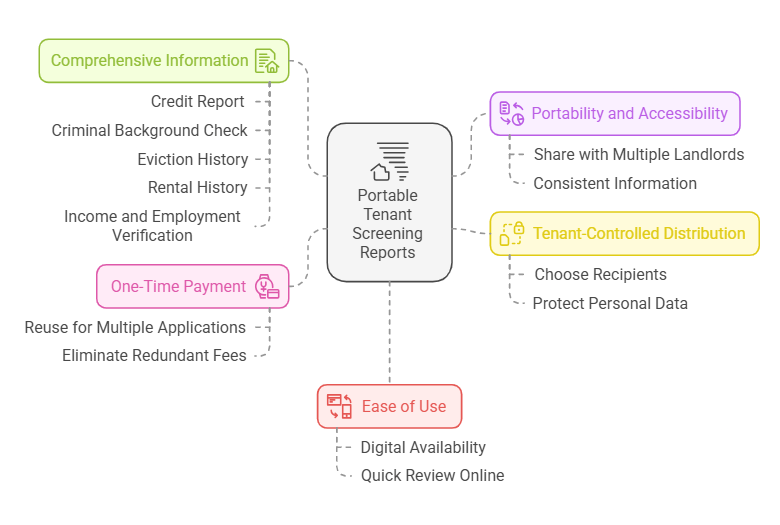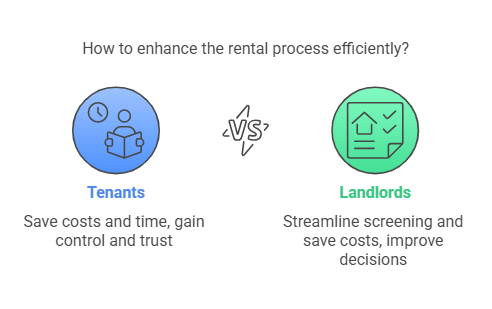Understanding Portable Tenant Screening Reports: Benefits for Tenants and Landlords
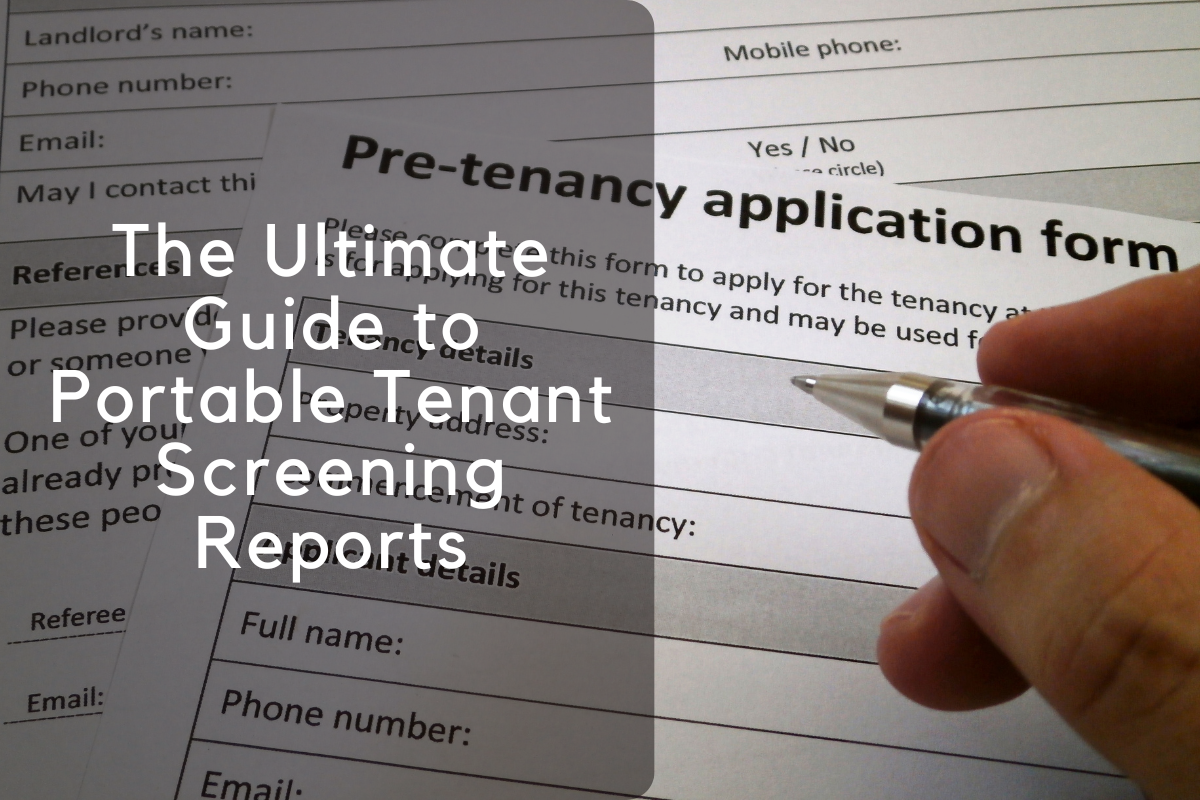
In today’s fast-paced rental market, efficiency and convenience are paramount for both tenants and landlords. A portable tenant screening report is a modern solution that addresses these needs by offering a streamlined, transferable report of a tenant’s rental history, credit score, criminal background, and other essential data. This report is designed to be easily shared with potential landlords, making it a game-changer in the tenant screening process.
Defining a Portable Tenant Screening Report
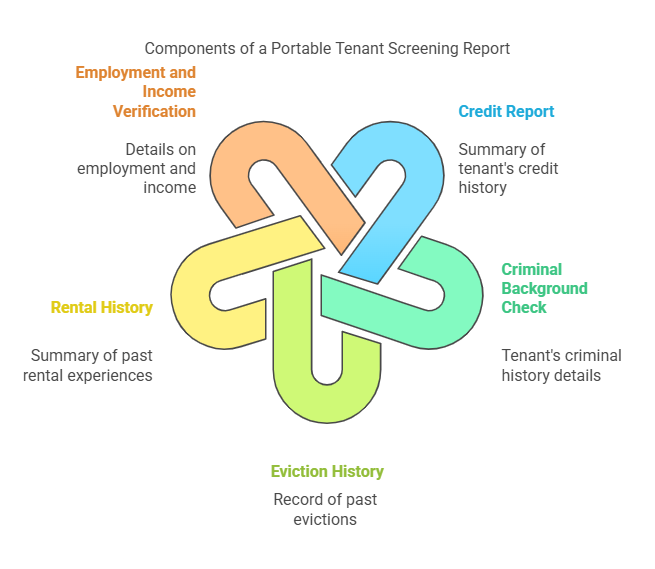
A portable tenant screening report is a comprehensive document that summarizes a tenant’s history and qualifications for renting a property. It includes crucial information such as:
- Credit Report: A summary of the tenant’s credit history, highlighting any past due payments, bankruptcies, or outstanding debts.
- Criminal Background Check: Information on the tenant’s criminal history, including any felonies, misdemeanors, or arrests.
- Eviction History: A record of any previous evictions, providing insight into the tenant’s history with other landlords.
- Rental History: A summary of past rental experiences, including how long the tenant lived at each property and their payment behavior.
- Employment and Income Verification: Details about the tenant’s employment status and income, helping landlords assess whether the tenant can afford the rent.
What sets a portable tenant screening report apart is that the tenant controls the report. Rather than each landlord independently running their own screening, tenants can present the same report to multiple landlords. This process eliminates the need for redundant background checks and simplifies the application process.
Importance for Tenants and Landlords
Benefits for Tenants
For tenants, a portable tenant screening report can significantly streamline the rental process. Some key benefits include:
- Time and Cost Efficiency: Tenants only need to pay for the screening once, and can reuse the same report for multiple rental applications, saving both time and money.
- Control Over the Information: Tenants have more control over their personal data, as they can choose when and with whom to share their screening report.
- Transparency: A portable report provides tenants with a clear, transparent summary of their rental history and background. This can help build trust with potential landlords by showing that the tenant has nothing to hide.
Benefits for Landlords
For landlords, portable tenant screening reports provide an efficient and reliable way to assess a tenant’s qualifications. Benefits for landlords include:
- Quick Access to Comprehensive Data: Landlords can access a thorough report that includes key details on a tenant’s credit, criminal history, and rental behavior, all in one place.
- Reduced Redundancy: Instead of having to run separate background checks for each applicant, landlords can rely on the portable report, ensuring consistency and reducing time spent on paperwork.
- Increased Confidence in Decision-Making: By having access to a detailed report that includes all the relevant tenant information, landlords can make informed decisions with greater confidence, reducing the risk of bad tenants.
How Portable Tenant Screening Reports Enhance the Rental Process
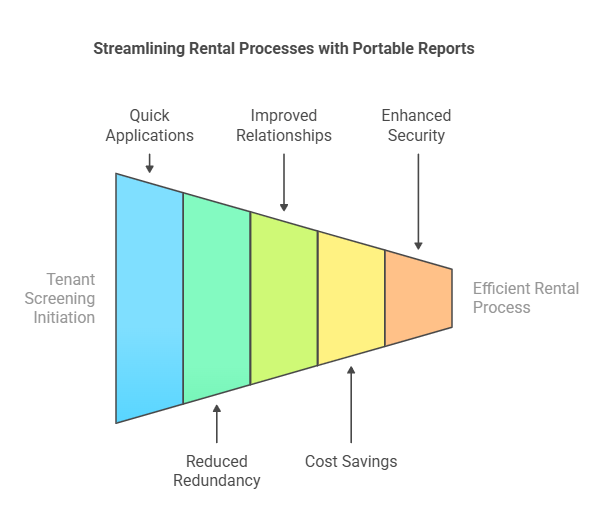
The introduction of portable tenant screening reports has brought about significant improvements to the rental process for both parties. Here’s how:
- Speed and Convenience: Tenants can quickly apply for multiple rentals with the same report, while landlords can evaluate applicants without the hassle of performing individual background checks each time. This speeds up the leasing process.
- Reduced Duplication: Tenants often find themselves submitting to multiple background checks for different landlords, which can be costly and time-consuming. With portable tenant screening reports, tenants only need to complete the screening once, eliminating redundant procedures.
- Better Tenant-Landlord Relationship: With the transparency that comes with a portable report, both tenants and landlords can enter into agreements with more trust and clarity. Tenants know their information is being presented accurately, and landlords can feel assured that they are making informed decisions.
- Cost-Effectiveness: Instead of paying for multiple background checks and screenings, tenants can purchase a single portable report and use it for every rental application. Landlords can also save money by avoiding repetitive background check costs.
- Enhanced Security: Since the tenant controls the distribution of the report, the risk of data mishandling or unauthorized access is reduced. This can provide peace of mind for both parties.
A portable tenant screening report is a valuable tool in the modern rental market. It offers tenants greater control over their information, reduces redundancy, and provides landlords with a quick, comprehensive view of a potential renter’s qualifications. As the rental process becomes increasingly digital and streamlined, portable tenant screening reports are poised to play a key role in making rentals faster, easier, and more transparent.

